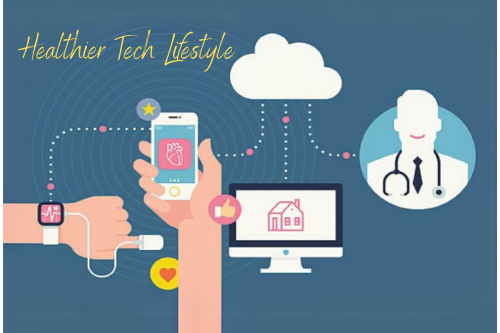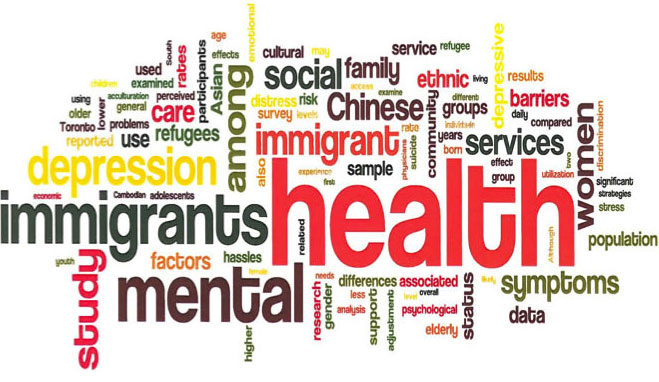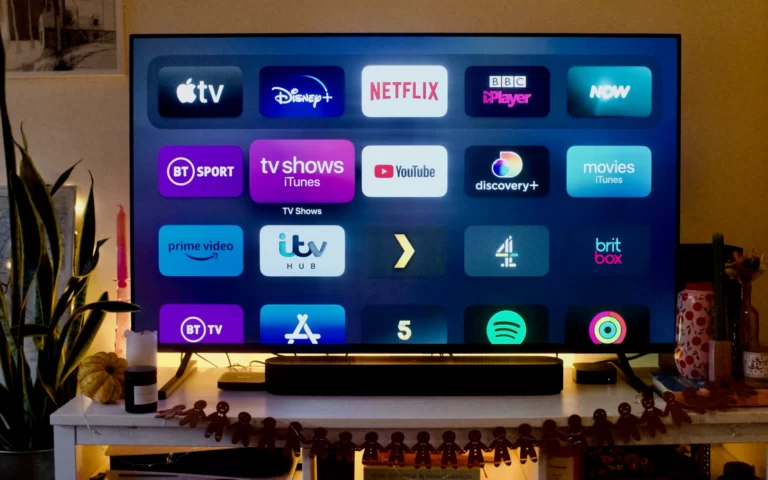Introduction
In today’s environment, we are constantly surrounded by technology. Phones, laptops, and other devices make our lives easier. But did you realize that excessive use of technology might have physical effects? In this post, we’ll discuss the potential negative effects of technology on your physical health as well as strategies for maintaining your wellbeing while utilizing it.
Excessive Sitting
Although technology offers incredible utility, it can also contribute to a sedentary lifestyle. Our daily routines involve extended periods of sitting, both at work and while enjoying TV, impacting our health and wellbeing. This sedentary behavior can lead to weight gain and pose challenges for our bones and muscles.
“Don’t miss our comprehensive guide on How To Avoid Hunching At Your Desk for more insights into A Guide to a Healthier Tech Lifestyle.”
Tip: Try to move around more. Take breaks to stretch or walk around. If possible, use a standing desk to avoid sitting for too long.
Straining Your Eyes
Long-term screen staring can damage our eyes, resulting in pain, headaches, and fatigue. This condition is referred to as “computer vision syndrome” or “digital eye strain.” For those who use digital devices frequently, this is a common issue.
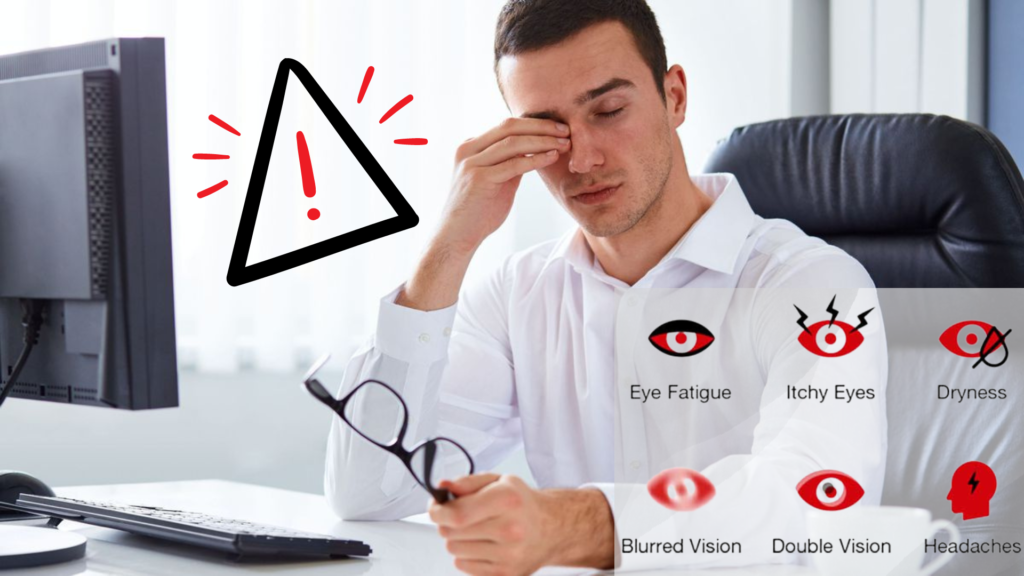
To reduce digital eye strain, you can:
- Follow the 20-20-20 rule: Take a 20-second break every 20 minutes and look at something 20 feet away. You can set a timer to remind you.
- Reduce overhead lights to reduce glare on the screen.
- Enlarge text on your devices to make it easier to read.
- Remember to blink, as staring at screens can make you blink less, leading to dry eyes. Eye drops can help if your eyes get too dry.
- Regular eye exams will ensure that you have the correct prescription for your glasses or contact lenses.
Tip: Take short breaks every 20 minutes, look at something far away for about 20 seconds, and make sure your workspace is well-lit, with your chair and screen at the right height.
Disrupting Your Sleep
Getting good sleep is essential for your body to work well. But if you use a laptop, tablet, or smartphone right before bed, it can affect your ability to sleep. This is because the blue light from these devices can keep you awake and mess up your body’s internal clock. Also, the things you do on digital devices can be exciting and make it tough to get sleepy. This can make people stay up late using technology.
It’s essential to distinguish between two categories of technological devices: interactive and passive. Passive devices, such as listening to music, reading an e-book, or watching TV, require minimal interaction from you. On the other hand, interactive devices, like playing video games or engaging in social media chats, respond to your actions by altering the on-screen content. Recognizing this difference is crucial for understanding their impact on your health and wellbeing, particularly when it comes to sleep quality. Interactive activities tend to have a more pronounced effect on your overall well-being.
To avoid disrupted sleep
- Stop using your smartphone, laptop, and tablet at least an hour before bed. Reading a book is more relaxing than scrolling through social media.
- Make the screen as dim as possible in the evening. Some devices have a “night mode” that’s easier on your eyes before sleep.
- You can use software like f.lux on your computer to reduce blue light and make the screen more orange in the evening.
- Try to keep your bedroom free from screens if you can.
- Create a calming bedtime routine that doesn’t involve screens to help you relax before sleeping.
Tip: Aim to put away screens at least an hour before bedtime.
Poor Posture from Tech Use
When using smartphones or tablets, we frequently bend our necks downward, which may lead to discomfort and soreness in the neck and back, commonly referred to as ‘text neck’ or ‘tech neck.’ Prolonged usage of mobile devices and computers often results in poor posture, gradually affecting our muscles and bones. Recognizing this issue is vital for maintaining good posture and the health and wellbeing of our musculoskeletal system.
Many devices make us lean forward and look down at the screen. This puts too much pressure on our neck and spine. It’s possible that other things, like age and how active we are, also affect neck pain.
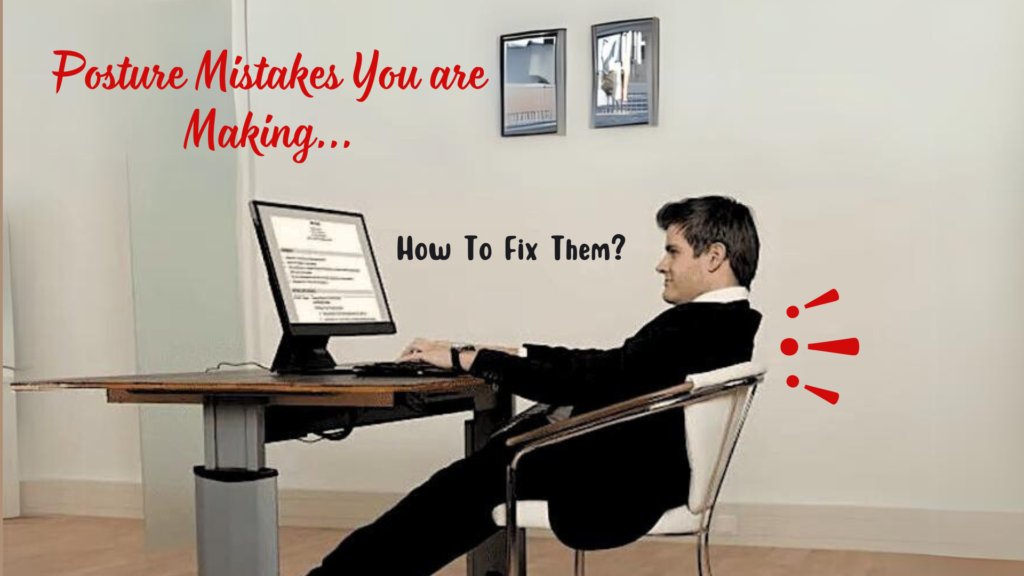
Fixing bad posture while using technology can help improve your overall posture and make your core, neck, and back stronger.
For example, if you sit in one position for a long time, like at a desk, it’s good to stand or stretch regularly to reduce strain on your body. Taking short breaks, like walking around every hour, can also help keep your muscles relaxed and prevent bad posture.
Tip: Pay attention to how you hold your devices. Keep them at eye level to avoid hurting your neck and back.
Embracing Technology for a Healthier You
Technology isn’t all bad for your health. Apps and technologies are available to help you stay active and healthy. You can use fitness apps, smartwatches, and online workouts to keep track of your physical activity and set goals.
Tip: Use technology to help you exercise and stay active. It can be fun and motivating!
Conclusion
Technology is part of our lives, but we need to be careful with how we use it.It has both positive and negative effects on our bodies. By being aware of how technology can impact our health and by making some changes, we can enjoy the benefits of technology while keeping our bodies healthy. Remember, it’s all about finding the right balance.
For more Amazing and Unique information and posts visit our Home page... If you have any suggestions or information, feel free to share them with us ….

